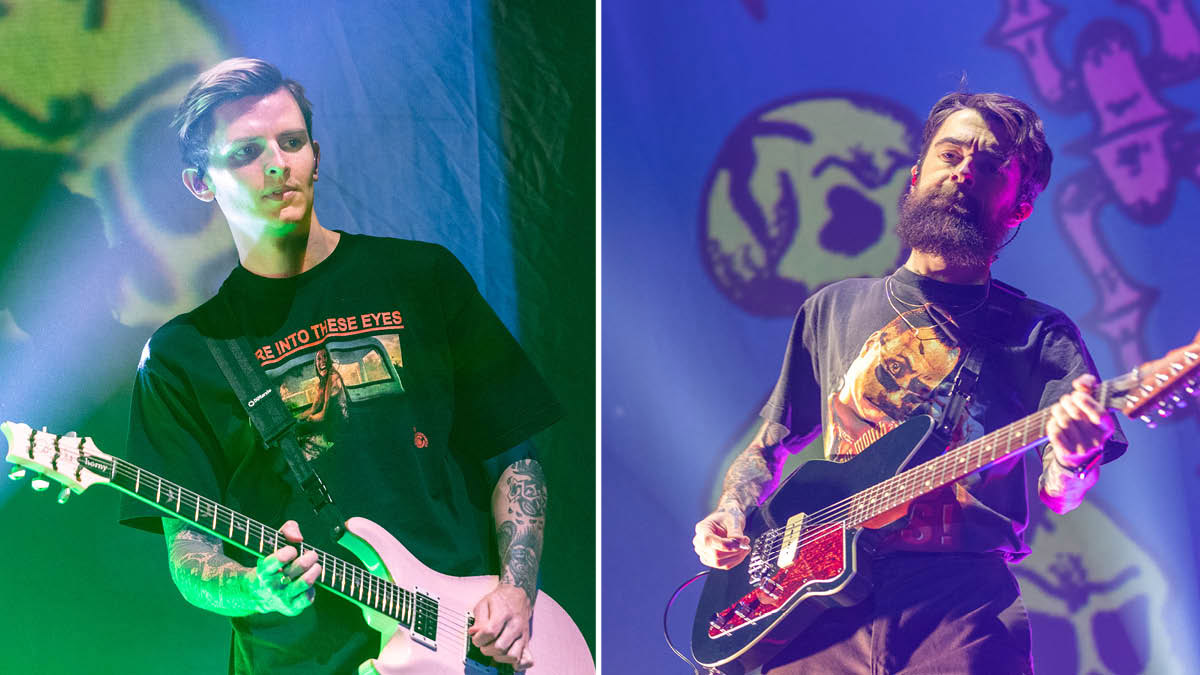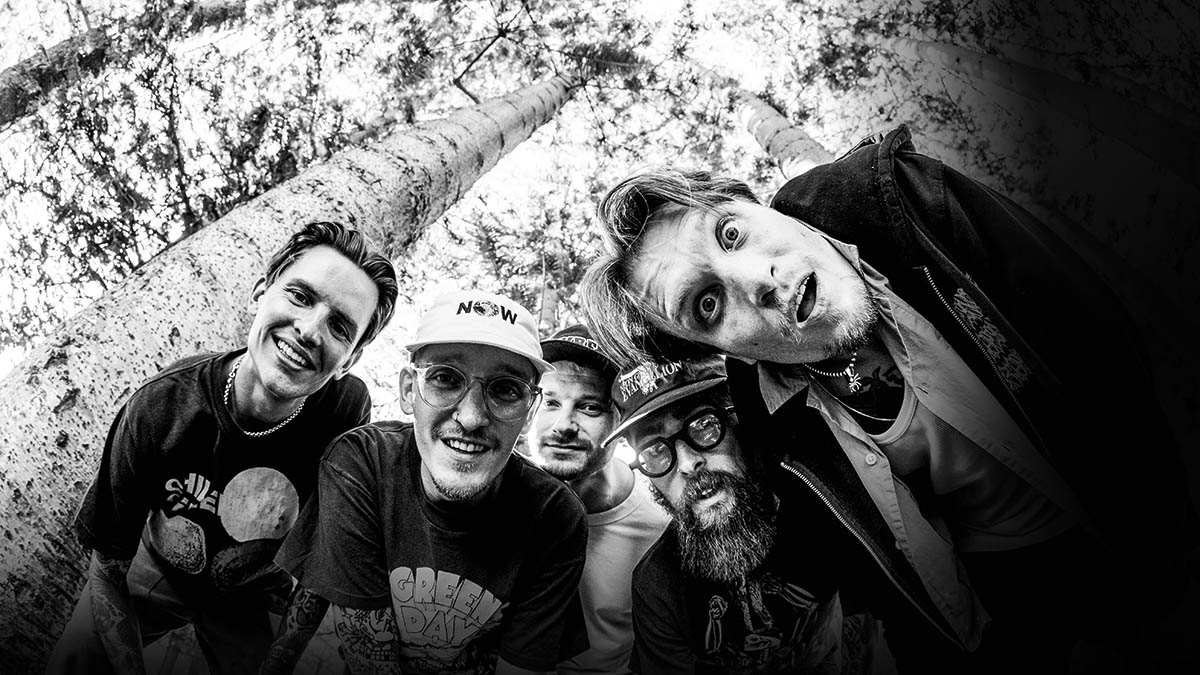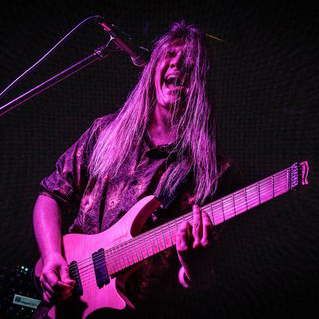“In pop-punk, you have to be able to sing any guitar part. To have a shreddy solo feels like a waste – it just shows off that individual’s musicianship and doesn’t do much for the audience”: Neck Deep on how to write the perfect pop-punk song
The Welsh pop-punk stalwarts’ six-string engine room share their strategies for mass audience singalongs, praise digital amp rigs, and explain why sometimes you don't have to do what the producer says

Before a certain pair of American millionaires came along to revive the local football team, pop punk protagonists Neck Deep were the biggest thing to happen in Wrexham in a long time.
From 2017’s The Peace And The Panic peaking at number four in the US Billboard top 200, to touring with Blink-182, headlining Slam Dunk 2022 and boasting 3.6m monthly listeners on Spotify, the band’s adrenalised anthems have proven a great success on both sides of the channel.
Then, with 2020’s All Distortions Are Intentional, they threw caution to the wind, and with it, all their influences into their sonic melting pot. While this album proved a hit with fans, the band have returned to their roots with their new, self-titled release. A record stripped of its predecessor’s leftfield adventures, what it serves up is a no nonsense collection of three-minute songs which confidently showcase what the band does best.
Guitarists Sam Bowden and Matt West discuss why they shrugged off big-name producers to record DIY, how they personalise the tried-and-tested pop punk formula, and provide top tips for writing killer pop-punk guitar solos.
You’re back with a new album, which was self-recorded at your warehouse space. What inspired that decision?
Sam: “In early 2021, we went to LA to work with Mike Green [who produced The Peace And The Panic]. But for some reason it just didn’t work. We’d actually spoken to a number of producers, but we had a realisation and thought, rather than have someone else steer the ship, we should do it ourselves. The studio can be quite intense when there’s a producer driving things forward and every second is money.
“Really, with these songs, all we needed was time and space. With All Distortions, we really did experiment and throw in all our influences. This time, we’ve never felt more inspired to write a straight pop-punk record. There’s no acoustics, no ballads, it’s all high-energy. We’re really stoked with the outcome and Seb [Barlow, bassist] did an amazing job of self-producing it.”
Get The Pick Newsletter
All the latest guitar news, interviews, lessons, reviews, deals and more, direct to your inbox!
Especially early on when you have less confidence and experience, you think that everything a producer says must be true
Matt West
Have you found that there are pros and cons to working with a producer?
Sam: “It’s a two-way street. We’ve taken a lot of advice from producers, things like ‘You have to be at the chorus by 43 seconds’. And we’ve taken certain corners, but when we look back at some of the songs, we wish we hadn’t because that took away the charm of what they were supposed to be.
“Especially early on when you have less confidence and experience, you think that everything a producer says must be true. But like all of us, we’re throwing shit at a wall and hoping something sticks. It’s definitely useful to have that understanding, but it’s about learning when to apply them.”
Talk us through the guitar recording setup for the album…
Sam: “In LA we were using real amps, but when we came back to self-produce, we used DIs and amp sims. You don’t get as much width out of the guitars because there’s no air being pushed out, like you get with an amp. But we’re really happy with how the guitars came out.
“We used STL Tonality plugins, the Cory Wong Neural DSP pack, which is really awesome, and the Mixwave Milkman Creamer for cleans, but Seb’s our tone wizard. We’d flick through a load of presets and give him some ballpark ideas and he’d know what to do.”
I wrote We Need More Bricks on MIDI bass in a coffee shop
Sam Bowden
What’s your current live rig?
Matt: “We’ve recently moved from Kemper to the Quad Cortex, which sounds so, so good.”
Sam: “When we’ve recorded albums in the past, we’ve captured tones with the Kemper, so we put them onto the Quad Cortex as our jumping off point before we fully integrated with the Neural tones.”
Matt: “That’s the benefit of having a modeller, because we can reference tones from different records during our sets. To do that otherwise, the amount of gear that we’d have to carry with us would be insane. And the tones are consistent as well. We could land overseas somewhere and line up three JCM800s and all three of them would sound completely different. Now we know our tones are going to exactly the same as they did the day before.”
We Need More Bricks has a monster riff. What’s the story behind the song?
Sam: “I wrote that on MIDI bass in a coffee shop. I was staying at my fiancé’s studio apartment. She works remote and had meetings all day, so I went across the road to a coffee shop with my laptop and I ended up writing most of the song that day. It came out immediately, which never happens.
“I couldn’t wait to get back to the apartment and put some guitars on it, because I knew how they were gonna sound. Seb came up with the lead part, him and Ben [Barlow, vocals] are overloaded with melodies, so many of the extra guitar layers come together when I work with them. They’re overflowing with ideas, so as long as everything gets a chance, we’ll land on something we collectively feel is right.”

“Ben actually didn’t like it at first – he usually listens to a song and feels a connection, but with this he really didn’t know what it was going to be about. But in Neck Deep, if one of us loves a song, we’ll see it through to the end. I’m stoked with how it turned out and Ben is too. He’d wanted to write a political song but it’s quite a struggle sonically to find the right song to attach that to, it just took a while for him to get to that point.”
Matt: “The way we normally work is that there’s a music bed before there are vocals, so I think it influences the tone of the lyrics from the get go. …Bricks brought out Ben to make it more political because it was a bit grittier than something like It Won’t Be Like This Forever, where there are more open chords [that] sound a lot lighter. The guitars have a huge influence on what lyrics Ben brings forwards for each song.”
Do you find some of your best music comes when it isn’t forced?
Sam: “There’s something rewarding about persevering, seeing an idea through. But I think a lot of our ideas are better when you don’t have to spend weeks on them. When we were in LA, writing in an Airbnb in 2021, we were working on [2022 single] STFU and Ben went to the toilet, which was in the room bordering where we were set up.
“I was just playing a four-chord progression, which we’ve used in multiple songs and, from the other room, we can hear Ben splashing and humming. He came back in and said, ‘What were you just playing?’ And he began to sing the whole chorus, pretty much word for word, of what became It Won’t Be Like This Forever. So we closed the STFU session and started a new one. It came out of nowhere.”
Speaking of, is it hard to write interesting chord progressions and ideas while staying within the typical pop-punk framework?
Sam: “It becomes more challenging as we progress through records. In pop-punk, there are only so many chords and progressions that exist. We can try mix it up with some chokes here and there, but ultimately, the progression is going to be the progression; it’s all the other guitar layers where you can change the balance of how it feels.
“The vocals carry so much of the song, so without any direction and any influence, trying to come up with the initial frame can be really challenging. That’s why we write as much as possible to come up with that hook, whether it’s a guitar or a drum pattern that makes you stop and think for a second. Then we know we’ve got something worth chasing.”
What are your most prized guitars at the moment?
Matt: “Quite recently, I’ve been sticking a few vintage Gibsons in the arsenal which has been fun. I started with a Billie Joe Armstrong signature Les Paul Junior, one of the original runs in black, which has always been one of my dream guitars.
“From there I ended up buying a 1987 double-cut Junior in Tobacco Burst, which is the nicest guitar that I will ever own; it’s an absolute travesty that I’m playing it and not someone much more skilled at the guitar. My friend, who I bought it off of, who owns a guitar store in Chester, also came across the exact same guitar in Cherry Red, so I had to buy that as well.
Sam: “I’ve been using PRS since 2016. They’re maybe not the most pop-punk-looking guitars, but the quality of build is flawless. I’ve got a Gibson SG which sounds sick, but after playing PRS for so long, I hate playing that standing up. There’s only a certain amount of guitars that I’m comfortable performing with now because the PRS has such a contoured neck, nothing comes close to their comfort and they’re pretty much always bang in tune.”
Matt, you’ve been playing your Reverend Signature guitar since about 2018. How is that guitar holding up and has anything changed on it since then?
Matt: “I’ve changed nothing and I don’t need to because I’m very utilitarian when it comes to the guitar. My signature Reverend has one P-90 pickup and volume, tone and a bass contour knobs which are usually at 10. That’s it. I gravitated towards the P-90 because Billie Joe Armstrong used them and he was my guitar hero.
“I remember buying Total Guitar when he was on the cover for American Idiot. It came with some stickers and I stuck them all over my guitar to pretend to be like him. When I learnt that he used a P-90 I was curious to try one and as soon as I did, I understood why he used them.
“It’s more reactive than a humbucker, especially when I’m digging in. You still have to push the noise gate with it, but the tonality of it really cuts through and I don’t think I’ll ever use another pickup at this point.”
The solo in They May Not Mean To… really elevates the song. What was your approach to writing it?
Sam: “That was me sat with a guitar, playing on a loop whilst Seb sat next to me and Ben stood over me, riffing melodies and pointing to the fretboard like, ‘Do this!’ I had something originally, but it was too shreddy and didn’t serve the song, so, it was very collectively written in the end. I think it sounds ripping on the record.”
We’ll find in certain parts of the world, especially in South America and Asia, that the crowds will sing the riffs back at us and it’s so loud. It’s a great feeling
Sam Bowden
So, what are your top tips for writing a memorable pop-punk solo?
Sam: “In pop-punk, especially for Neck Deep, you have to be able to sing it. That goes with any guitar part. We’ll find in certain parts of the world, especially in South America and Asia, that the crowds will sing the riffs back at us and it’s so loud. It’s a great feeling. In terms of the song, to just have a shreddy solo feels like a waste of the part because it just shows off that individual’s moves musicianship and doesn’t really do much for the audience.
“That’s not the type of band that we are. It needs to be fun and still represent a guitar solo, but be simple enough where people can still sing along. The easiest way is to go off a vocal or a drum pattern, so there’s already that phrasing that people are used to by that point in the song. Then you can take it for a walk before returning to that pattern so the listener doesn’t get lost!”
- Neck Deep is out now via Hopeless Records.
A freelance writer with a penchant for music that gets weird, Phil is a regular contributor to Prog, Guitar World, and Total Guitar magazines and is especially keen on shining a light on unknown artists. Outside of the journalism realm, you can find him writing angular riffs in progressive metal band, Prognosis, in which he slings an 8-string Strandberg Boden Original, churning that low string through a variety of tunings. He's also a published author and is currently penning his debut novel which chucks fantasy, mythology and humanity into a great big melting pot.
“I was in a frenzy about it being trapped and burnt up. I knew I'd never be able to replace it”: After being pulled from the wreckage of a car crash, John Sykes ran back to his burning vehicle to save his beloved '76 Les Paul
“His songs are timeless, you can’t tell if they were written in the 1400s or now”: Michael Hurley, guitarist and singer/songwriter known as the ‘Godfather of freak folk,’ dies at 83










